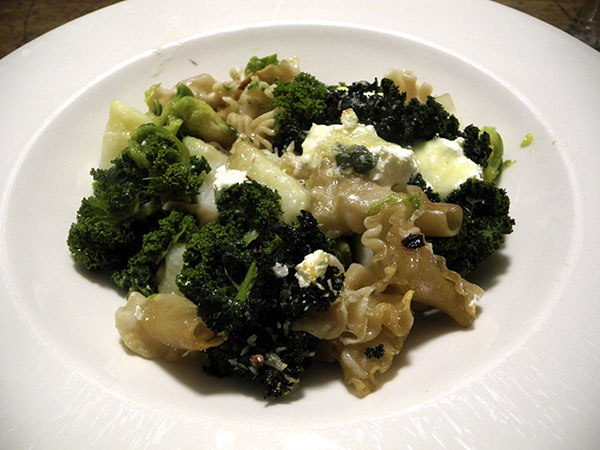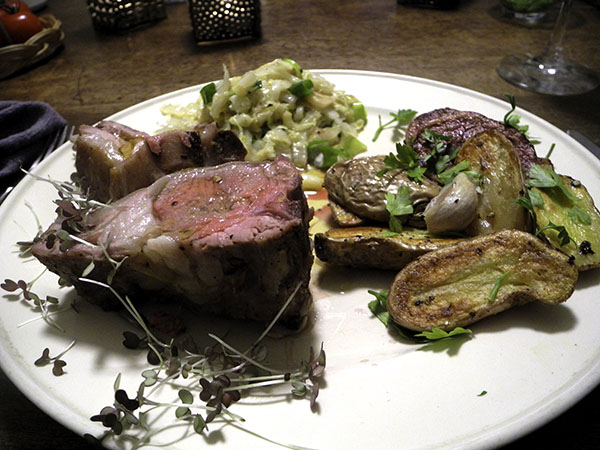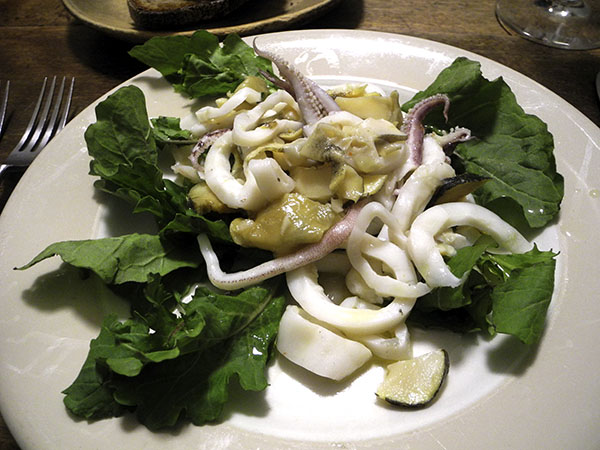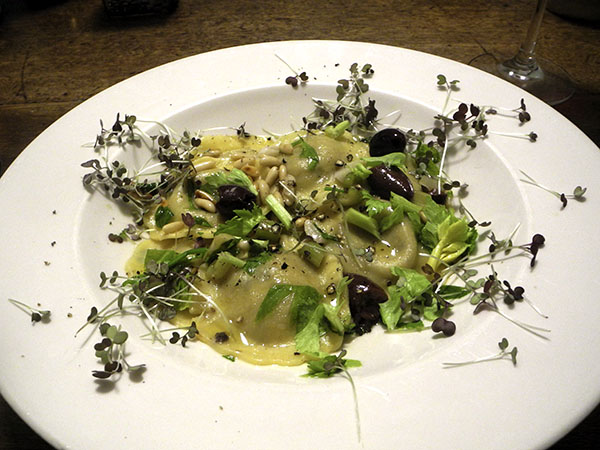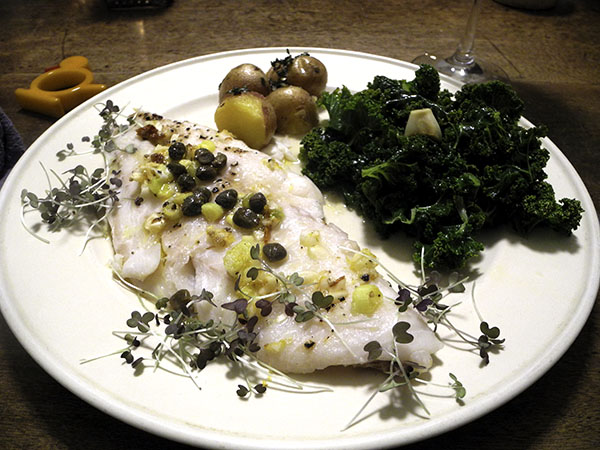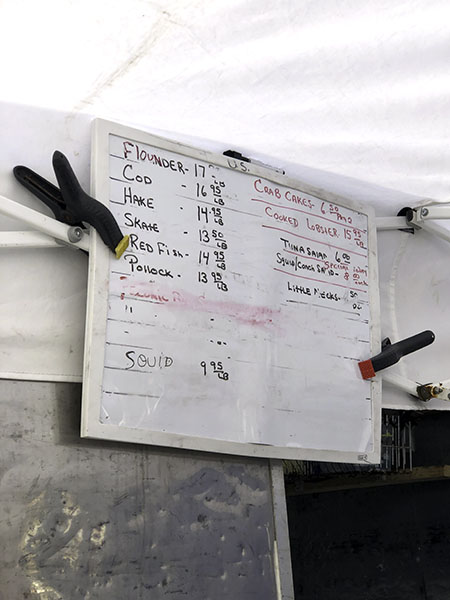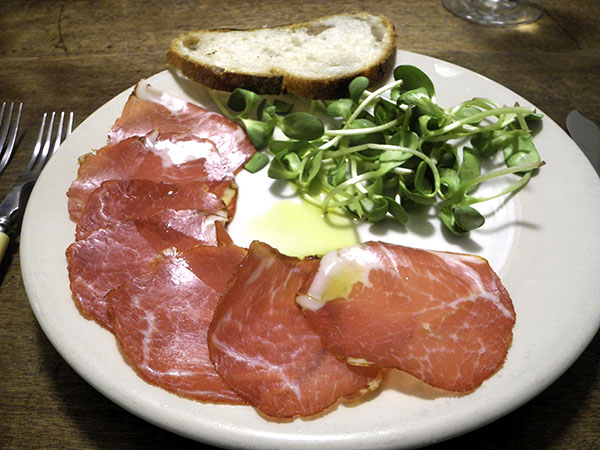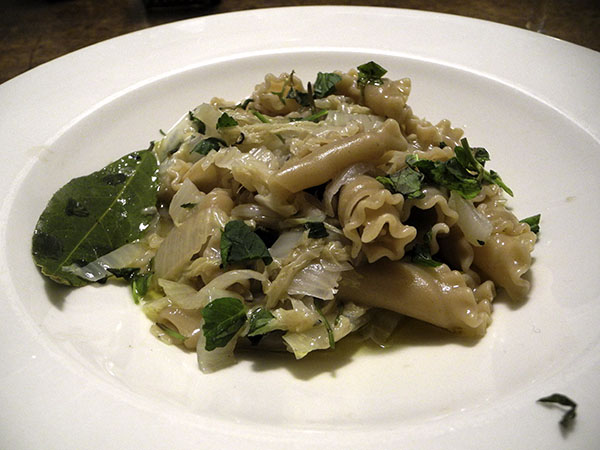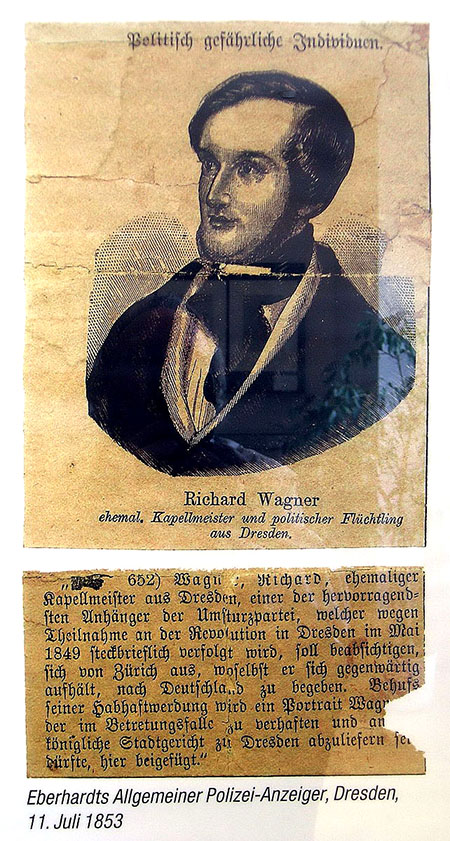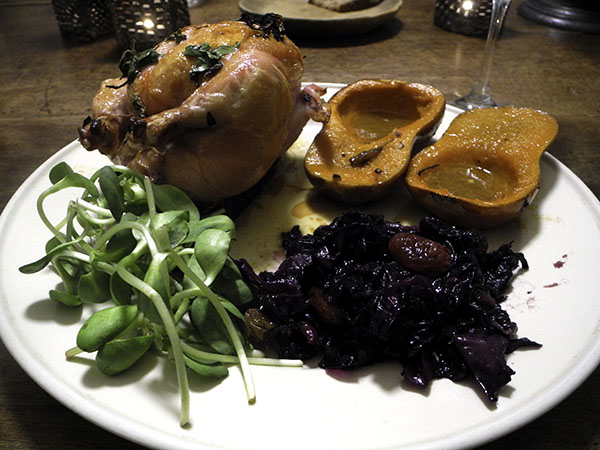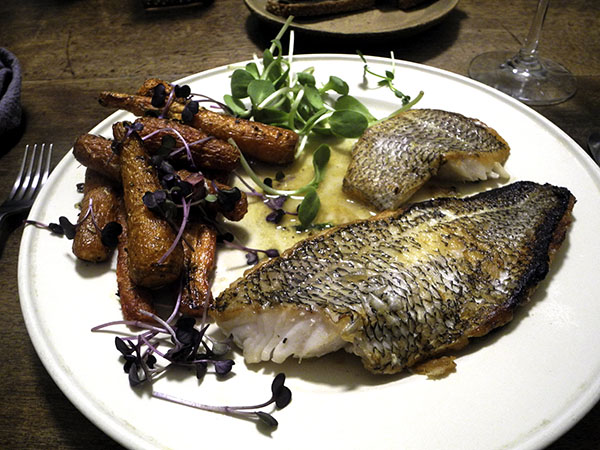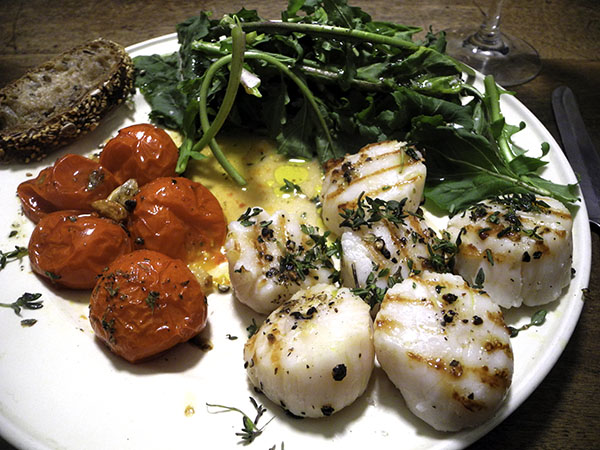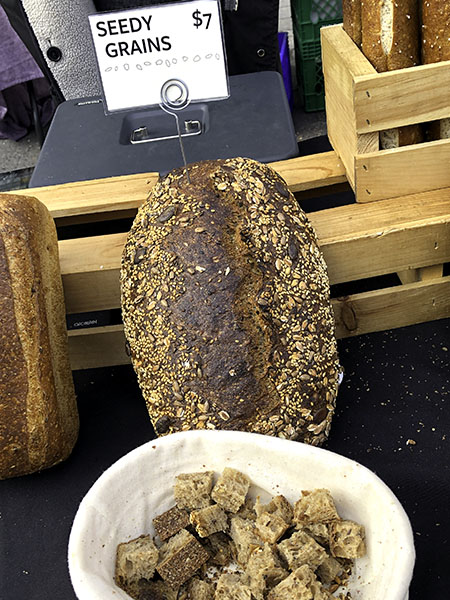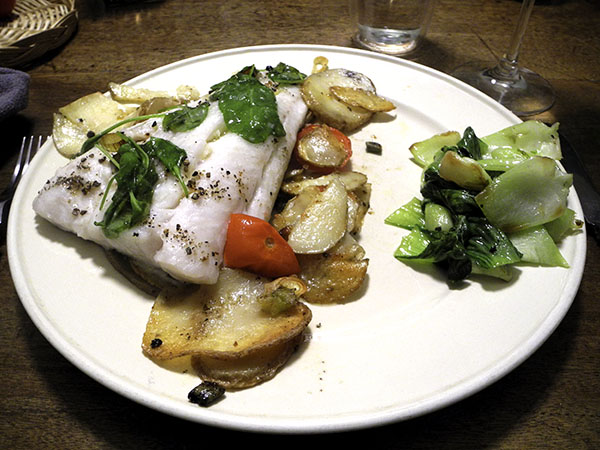
I’ve been talking about cold weather food for days, and while this meal continues the theme, the appearance of tomato, and sorrel this time (although both were grown inside), suggests relief might be on the way.
It was still an oven-baked dish, and the bok choy was a local January/February phenomenon discovered in the Union Square Greenmarket after weeks without any real green vegetables, or at least none on my visits afternoons, and it was the last bundle on the table when I arrived at the farm stand.
- two 8-ounce kennebec potatoes from Rick Bishop’s Mountain Sweet Berry Farm, washed, but not peeled, sliced thinly with a sharp knife, tossed in a ceramic oven pan with two tablespoons of butter which had already been allowed to melt inside the pan over a very low flame (I stepped away for a minute, and when I looked back, I saw, scarily, that the butter had begun to brown a bit in the center of the clay casserole; I stopped it before any harm was done and I think the slight browning actually added more flavor to the dish), some sea salt and freshly-ground black pepper added, the potatoes then spread evenly, roasted at 425º, sprinkled after 12 minutes with one large sliced scallion from Philipps Farms, and, at roughly 20 minutes, a few Backyard Farms Maine ‘cocktail tomatoes’ from Whole Foods Market, each sliced horizontally into 3 sections and lightly seasoned, the pan remaining in the oven a few minutes longer, for what would be a total of about 25-30 minutes, when they had begun to brown, when one 17-ounce haddock fillet from P.E. & D.D. Seafood, cut crosswise into two pieces of equal weight, ws placed on top of the vegetables, the fish spread with softened knobs from a little more than one tablespoon of butter, some sea salt and freshly-ground black pepper, the pan returned to the oven for 10, maybe 13, minutes, or until the fish was just done, or cooked through, its contents arranged on the plates, the fillets topped with fresh baby sorrel from Two Guys from Woodbridge that had been just slightly heated in a little butter
- several small heads of bok choy from Philipps Farms, the last in their stand when I arrived, the leaves separated from the base, very thoroughly washed and drained, halved crosswise, the stems stirred into a large antique large copper pot inside of which 2 bruised and halved garlic cloves from John D. Madura Farms had been heated until beginning to brown, the thinner, leaf ends added a few seconds later, occasionally introducing some of the water which they had shed after being washed, the greens cooked until barely tender, their stems still a little crunchy, seasoned with salt and pepper, arranged on the plates, and drizzled with a little more olive oil
- the wine was a really awesome Australian (VictoriaAppellation/Goulburn Valley) white, Ben Haines B Minor Rousanne Marsanne 2016, from Copake Wine Works
- the music was Bellini’s opera semiseria, ‘La Sonnambula’, Evelino Pidò conducting the Lyon Opera Orchestra and the Lyon Opera Chorus
